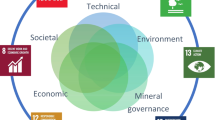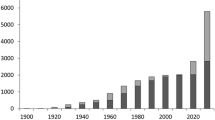Abstract
Hydroelectric dams represent major investments and major sources of environmental and social impacts. Powerful forces surround the decision-making process on public investments in the various options for the generation and conservation of electricity. Brazil’s proposed Belo Monte Dam (formerly Kararaô) and its upstream counterpart, the Altamira Dam (better known by its former name of Babaquara) are at the center of controversies on the decision-making process for major infrastructure projects in Amazonia. The Belo Monte Dam by itself would have a small reservoir area (440 km2) and large installed capacity (11, 181.3 MW), but the Altamira/Babaquara Dam that would regulate the flow of the Xingu River (thereby increasing power generation at Belo Monte) would flood a vast area (6140 km2). The great impact of dams provides a powerful reason for Brazil to reassess its current policies that allocate large amounts of energy in the country’s national grid to subsidized aluminum smelting for export. The case of Belo Monte and the five additional dams planned upstream (including the Altamira/Babaquara Dam) indicate the need for Brazil to reform its environmental assessment and licensing system to include the impacts of multiple interdependent projects.


Similar content being viewed by others
Literature Cited
Amazonas em Tempo [Manaus]. 2004, Lula quer a retomada de obras paralisadas 21 March 2004, p. A–7
Bermann, C. 2002. Brasil não precisa de Belo Monte. Amigos da Terra-Amazônia Brasileira, São Paulo, Brazil. Available at http://www.amazonia.org.br/opiniao/artigo_detail.cfm?id=14820
Bermann, C., and O. S. Martins, 2000. Sustentabilidade energética no Brasil: Limites e possibilidades para uma estratégia energética sustentável e democrátic. Série Cadernos Temáticos No. 1. Projeto Brasil Sustentável e Democrático, Federação dos Órgãos para Assistência Social e Educacional (FASE), Rio de Janeiro
Brazil, ELETROBRÁS. 1987. Plano 2010: Relatório Geral, Plano National de Energia Elétrica 1987/2010 (Dezembro de 1987). Centrais Elétricas Brasileiras (ELETROBRÁS), Rio de Janeiro
Brazil, ELETROBRÁS. 1993. Plano National de Energia Elétrica 1993–2015: Plano 2015. Centrais Elétricas Brasileiras (ELETROBRÁS), Rio de Janeiro. Available at http://www.eletrobras.gov.br/mostra_arquivo.asp?id=http://www.eletrobras.gov.br/downloads/EM_Biblioteca/volume1.pdf&tipo=biblioteca_publicacoes
Brazil, ELETROBRÁS. 1998. Plano Decenal 1999–2008. Centrais Elétricas Brasileiras (ELETROBRÁS). Rio de Janeiro
Brazil, ELETRONORTE. 1987a. Contribuição da ELETRONORTE para atendimento das necessidades futuras de energia elétrica da Amazônia. Centrais Elétricas do Norte do Brasil (ELETRONORTE), Brasília, DF, Brazil
Brazil, ELETRONORTE. 1987b. Esclarecimento Público: Usina Hidrelétrica Balbina. Modulo 1, Setembro 1987. Centrais Elétricas do Norte do Brasil. (ELETRONORTE), Brasília, DF, Brazil
Brazil, ELETRONORTE. 1987c. UHE Balbina: Enchimento do reservatório, considerações gerais. BAL-39-2735-RE. Centrais Elétricas do Norte do Brasil (ELETRONORTE), Brasília, DF, Brazil
Brazil, ELETRONORTE 1989. Tarifas compõem receita da Eletronorte. Corrente Contínua [ELETRONORTE, Brasília] 12(140):10–11
Brazil, ELETRONORTE. 2002. Complexo hidrelétrico Belo Monte: Estudos de viabilidade, relatório final. Centrais Elétricas do Norte do Brasil (ELETRONORTE), Brasília, DF, Brazil, 8 vols
Brazil, ELETRONORTE. nd [2002]. Complexo hidrelétrico Belo Monte: Estudo de impacto ambiental–EIA. Versão preliminar. Centrais Elétricas do Norte do Brasil (ELETRONORTE), Brasília, DF, Brazil, 6 vols
Brazil, MME-CCPESE, 2002, Plano decenal de expansã o 2003–2012: Sumário executivo. Ministério das Minas e Energia, Comité Coordinador do Planejamento da Expansão dos Sistemas Elétricas (MME-CCPESE), Brasília, DF, Brazil
Carvalho, R, 1999. A Amazônia rumo ao “ciclo da soja.” Amazônia Papers No, 2, Programa Amazônia, Amigos da Terra, São Paulo, Brazil, Available from http://www.amazonia.org.br
Chernela J. M. 1988. Potential impacts of the proposed Altamira–Xingu hydroelectric complex in Brazil. Latin American Studies Association Forum 129(2):3–6
CIMI, CEDI, IBASE, and GhK. 1986 Brasil: Áreas indígenas e grandes projetos. Comissão Indigenista Missionária (CIMI), Centro Ecumênico de documentação e Informação (CEDI), Instituto Brasileiro de Análise Social e Econômica (IBASE), and Gesamthochschule Kässel (GhK), Brasília, DF, Brazil
CNEC. 1980. Estudo de inventá rio hidrelétrico da bacia hidrográfica do Rio Xingu. Ministério das Minas e Energia, ELETRONORTE, Consórcio de Engenheiros Consultores (CNEC), São Paulo, Brazil
Eve E., F. A. Arguelles, P. M. Fearnside. 2000. How well does Brazil’s environmental law work in practice? Environmental impact assessment and the case of the Itapiranga private sustainable logging plan. Environmental Management 26(3):251–267
FADESP. 1996. Relatorio de estudos de impacto ambiental – EIA, referente ao projeto de implantação da hidrovia dos rios Tocantins, Araguaia e Mortes. Fundação de Amparo e Desenvolvimento da Pesquisa (FADESP), Universidade Federal do Pará (UFPA), Belém, Pará, Brazil, 7 vols
Fearnside P M. 1989a, The charcoal of Carajás: Pig-iron smelting threatens the forests of Brazil’s Eastern Amazon Region, Ambio 18(2):141–143
Fearnside P. M. 1989b. A prescription for slowing deforestation in Amazonia. Environmental Management 31(4):16–20, 39–40
Fearnside P. M. 1989c. Brazil’s Balbina Dam: Environment versus the legacy of the pharaohs in Amazonia. Environmental Management 13(4):401–423
Fearnside P. M. 1995. Hydroelectric dams in the Brazilian Amazon as sources of ‘greenhouse’ gases. Environmental Conservation 22(1):7–19
Fearnside P. M. 1999. Social impacts of Brazil’s Tucuruí Dam. Environmental Management 24(4):485–495
Fearnside P. M. 2001. Environmental impacts of Brazil’s Tucuruí Dam: Unlearned lessons for hydroelectric development in Amazonia. Environmental Management 27(3):377–396
Fearnside P. M. 2002. Greenhouse gas emissions from a hydroelectric reservoir (Brazil’s Tucuruí Dam) and the energy policy implications. Water, Air and Soil Pollution 133(l–4):69–96
Fearnside P. M. 2004. A água de São Paulo e a floresta amazônica, Ciência Hoje 34(203):63–65
Fearnside P. M. 2005. Brazil’s Samuel Dam: Lessons for hydroelectric development policy and the environment in Amazonia. Environmental Management 35(1):1–19
Fearnside P. M., R. L. Barbosa. 1996a. Political benefits as barriers to assessment of environmental costs in Brazil’s Amazonian development planning: The example of the Jatapu Dam in Roraima. Environmental Management 20(5):615–630
Fearnside P. M., R. I. Barbosa. 1996b. The Cotingo Dam as a test of Brazil’s system for evaluating proposed developments in Amazonia. Environmental Management 20(5):631–648
Fisher W. H. 1994. Megadevelopment, environmentalism, and resistance; The institutional context of Kayapó indigenous politics in Central Brazil. Human Organization 53(3):220–232
Gazeta Mercantil [Brasília]. 2001. Energia; MP fixa prazos para licenças ambientais.” 15 May 2001. Available at http://www.gazetamercantil.com.br
Gitlitz, J. 1993. The relationship between primary aluminum production and the damming of world rivers. IRN Working Paper 2. International Rivers Network (IRN), Berkeley, CA
Goldemberg J., T. B. Johansson, A. K. N. Reddy, R. H. Williams. 1985. Basic needs and much more with one kilowatt per capita. Ambio 14(4–5):190–200
Goodland R., A. Juras, R. Pachauri. 1993. Can hydro-reservoirs in tropical moist forest be made environmentally acceptable? Environmental Conservation 20(2):122–130
Indriunas, L. 1998. FHC inaugura obras em viagem ao Pará, Folha de São Paulo, 14 July 1998, p. 1–17
ISA. 2001. Entidades promovem ato de repúdio contra o assassinato de Dema, Institute Socioambiental (ISA), São Paulo, Brazil. Available from http://www.amazonia.org.br/noticias/noticia.cfm?id:=4709 (accessed August 30, 2001)
Pinto L. F. 1991. Amazônia: A fronteira do caos, Editora Falangola, Belém, Pará, Brazil
Pinto L. F. 1998. Amazônia: O século perdido (a batalha do Alumínio e outras derrotas da globalização). Edição Jornal Pessoal, Belém, Pará, Brazil
Pinto, L. F. 2001. Xingu: Capítulo 2. Eletronorte é derrotada pela segunda vez em suas intenções de construir uma hidrelétrica no rio Xingu, O Estado de S.Paulo, 26 December 2001. Available from http://www.amazonia.org.br/opiniao/artigo_detail.cfm?id:=14940
Pinto L. F. 2002a. Hidrelétiicas na Amazônia: Predestinação, fatalidade ou engodo? Edição Jornal Pessoal, Belém, Pará, Brazil.
Pinto, L. F. 2002b. A derrota de Belo Monte. O Estado de São Paulo, 12 November 2002. Available from http://www.amazonia.org.br/arquivos/57331.pdf
Pinto, L. F. 2003. Corrigida, começa a terceira versão da usina de Belo Monte. Jornal Pessoal [Belém], 28 November 2003. Available from http://www.amazonia.org.br/opiniao/artigo_detail.cfm?id=90328
Pinto, L. F. 2004. CVRD: Agora também na Amazônia ocidental. Jornal Pessoal [Belém], 15 November 2004, p. 3
Pinto L. F. 2005. Grandezas e misérias da energia e da mineração no Pará. In: A. O. Sevá Filho (eds).Tenotã-mõ: Alertas sobre as conseqüências dosprojetos hidrelétricos no rio Xingu, Pará, Brasil. International Rivers Network, São Paulo, SP,Brazil Pages 95–113
Pontes Júnior, F., and J. F. Beltrão. 2004. Xingu, Barragens e Nações indigenas, Núcleo de Altos Estudos Amazônicos (NAEA). Universidade Federal do Pará, Belém, Pará, Brazil
Rosa L. P. 2003. O Apagão: Por que veio? Como sair dele? Editora Revan, Rio de Janeiro
Santos, L. A. O., and L. M. M. de Andrade (eds.). 1990. Hydroelectric dams on Brazil’s Xingu River and indigenous peoples. Cultural Survival Report 30. Cultural Survival, Cambridge, MA
Santos, W. F. 2004. Os empreendimentos hidrelétricos na Amazônia, II Feira Internacional da Amazônia, II Jornada de Seminários Internacionais sobre Desenvolvimento Amazônico, Manaus, Amazonas, Brazil [Powerpoint presentation]
Sevá, O. 1990. Works on the great bend of the Xingu: A historic trauma? Pages 19–41 in L. A. O. Santos and L. M. M. de Andrade (eds.). Hydroelectric dams on Brazil’s Xingu River and indigenous peoples. Cultural Survival Report 30. Cultural Survival, Cambridge, MA
Sevá Filho, A. O. (ed.). 2005. Tenotã-mõ: Alertas sobre as conseqüências dos projetos hidrelétricos no rio Xingu, Pará, Brasil, International Rivers Network, São Paulo, SP, Brazil. Available from http://www.irn.org/programs/latamerica/pdf/TenotaMo.pdf
Switkes G. 1999. Gouging out the heart of a river: Channelization project would destroy Brazilian rivers for cheap soybeans. World Rivers Review 14(3):6–7
Switkes G. 2002. Brazilian government pushes ahead with plans for huge dam in Amazon. World Rivers Review 17(3):12–13
WCD (Work Commission on Dams) 2000. Dams and development :A new framework for decision making. The report of World Commission on Dams. World Commission on Dams (WCD) and Earthscan, London
Acknowledgments
The National Council of Scientific and Technological Development (CNPq AI 470765/01-1) and the National Institute for Research in the Amazon (INPA PPI 1-3620) provided financial support. A portion of this discussion appeared in Portuguese as part of contribution to ongoing Brazilian debates on the licensing of Belo Monte (Sevá Filho 2005). Three anonymous reviewers contributed valuable suggestions.
Author information
Authors and Affiliations
Corresponding author
Rights and permissions
About this article
Cite this article
Fearnside, P.M. Dams in the Amazon: Belo Monte and Brazil’s Hydroelectric Development of the Xingu River Basin. Environmental Management 38, 16–27 (2006). https://doi.org/10.1007/s00267-005-0113-6
Published:
Issue Date:
DOI: https://doi.org/10.1007/s00267-005-0113-6




